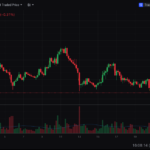Volume trading is a cornerstone strategy for traders aiming to decipher market dynamics and identify profitable opportunities. By analyzing trading volume, which represents the number of shares or contracts traded over a specific period, traders gain valuable insights into market strength, trends, and potential reversals. This article explores the fundamentals of volume trading, key strategies, and how it can be incorporated into your trading arsenal.
Why Volume Matters
Volume is a critical indicator of market activity and sentiment. It reflects the intensity of buying or selling pressure and often precedes price movements. High volume typically signals strong investor interest, while low volume suggests a lack of conviction or indecision in the market.
Key Principles of Volume Trading
- Volume Confirms Trends
A rising trend accompanied by increasing volume indicates strong momentum, while declining volume during an uptrend may signal a potential reversal. Similarly, a downtrend with high volume underscores bearish sentiment. - Breakout Validation
Volume spikes are crucial during price breakouts. A breakout above resistance or below support with high volume is more likely to sustain than one on low volume, which might be a false signal. - Volume and Price Divergence
When price moves higher or lower while volume decreases, it can signal a weakening trend, providing an early warning for traders to reconsider their positions. - Volume Spikes and Reversals
Sudden volume surges, especially after prolonged low activity, can indicate a significant change in trend or a reversal.
Common Volume Trading Strategies
- Volume Breakout Strategy
Identify key levels of support and resistance. Enter trades when price breaks these levels with significantly higher-than-average volume.- Example: A stock breaking a $50 resistance level with volume 50% above its average suggests a strong bullish move.
- Volume Oscillator
Use technical indicators like the Volume Oscillator, which measures the difference between two moving averages of volume. Positive values may confirm an uptrend, while negative values signal downtrend strength. - Relative Volume (RVOL)
Compare current trading volume to historical averages to identify unusual activity. A high RVOL often precedes significant price moves.- Use Case: RVOL greater than 3 indicates the current volume is three times the average, suggesting strong market interest.
- Volume Weighted Average Price (VWAP)
VWAP is a key metric used to measure the average price weighted by volume. Traders use it to identify fair value and spot entry or exit opportunities.- Example: Buying near VWAP during an uptrend provides a favorable entry point.
Tools and Indicators for Volume Trading
- On-Balance Volume (OBV): Tracks cumulative buying and selling pressure by adding volume on up days and subtracting it on down days.
- Accumulation/Distribution Line (A/D Line): Focuses on price and volume to determine the strength of accumulation or distribution in a market.
- Volume Profile: Displays volume levels at different price points, revealing areas of strong support or resistance.
Practical Tips for Success
- Combine Volume with Other Indicators
Volume trading works best when combined with other tools, such as moving averages, RSI, or MACD, to confirm signals. - Monitor Unusual Volume
Unusual volume can precede news announcements or significant market events, offering traders a heads-up. - Stay Disciplined
Use stop-loss orders and manage risk carefully, as volume spikes can sometimes lead to unpredictable moves.
Conclusion: Is Volume Trading Right for You?
Volume trading offers a robust framework for analyzing market activity and identifying opportunities. Whether you’re a beginner or an experienced trader, incorporating volume analysis into your strategy can enhance your decision-making. However, like any strategy, it requires practice, patience, and a thorough understanding of the markets.
Disclaimer: This article is for informational purposes only and does not constitute financial or investment advice. Always consult a professional advisor before making trading decisions.







